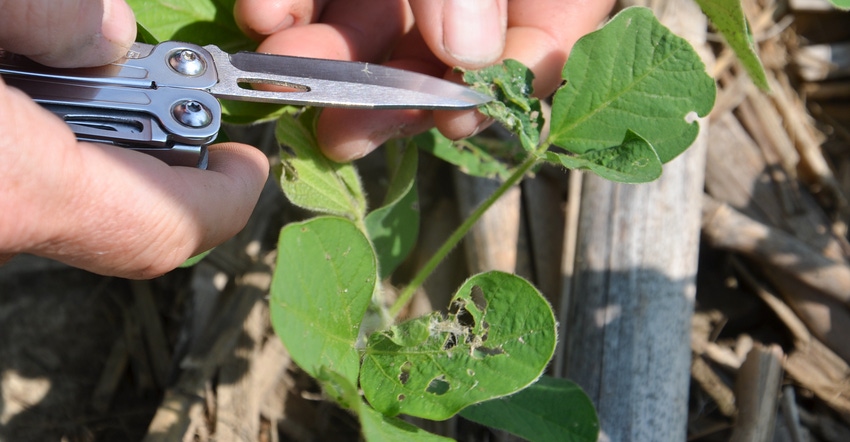
If Steve Gauck finds a stinkbug in soybeans, he will look for more. If he finds enough and if beans aren’t close to maturity, it could mean spraying. Stinkbugs can cause yield loss, as this insect proved in 2018.
“They use piercing mouth parts to penetrate the pod and suck juices out of individual beans,” says Gauck, a Beck’s sales agronomist based near Greensburg, Ind. Beck’s sponsors Soybean Watch ’19.
If there are enough stinkbugs stinging pods and shriveling up individual beans inside, significant yield loss can result, Gauck says. Plus, pods that are injured are more susceptible to diseases, which can gain entry through the injury and set up shop on other beans within the pod.
Stinkbugs come in two major varieties in crop fields: green stinkbugs and brown marmorated stinkbugs. Both can lead to yield damage if allowed to grow in numbers and left unchecked.
Sigh of relief
Not every insect you find in a soybean field is going to be a stinkbug, Gauck assures. There are beneficial insects, and then there are insects that may feed on soybean leaves but seldom cause economic loss.
Count the green cloverworm in the latter category. It can chew on leaves, but it’s usually present in minimal numbers, and overall damage is insignificant.
“We find them here and there and make note of them, but they seldom cause enough damage to impact soybean yields,” Gauck says.
The biggest reason to be aware of green cloverworm most years is to identify it and realize it’s an insect you don’t have to be concerned about, he notes. Not everything you find in a soybean field is going to cause economic damage.
Insect facts
The Purdue University Corn and Soybean Field Guide includes a picture and description of the green cloverworm on the page opposite of a grasshopper. Grasshoppers also seldom cause economic damage in most years. Both insects can make fields look ragged if they chew enough holes in leaves, Gauck notes, but it’s rare to find either in large enough numbers to raise concern.
Purdue publishes treatment thresholds for green cloverworm in the field guide. If they’re causing more than 25% defoliation of entire plants and are actively feeding on soybeans in the R6, or full seed, stage, treatment might still be worth it, according to the guide. Otherwise, Gauck considers them as an incidental pest. Very early in the season, it takes over 40% defoliation to trigger treatment.
Identify green cloverworm by looking for a pale yellow to green insect with white stripes down the sides. This insect has pests of its own. If you find them and they are discolored, they’re likely diseased. If they are covered with white eggs, parasites are working on them. In either case, you likely wouldn’t spray for them since natural causes are already at work on them, Gauck concludes.
About the Author(s)
You May Also Like




